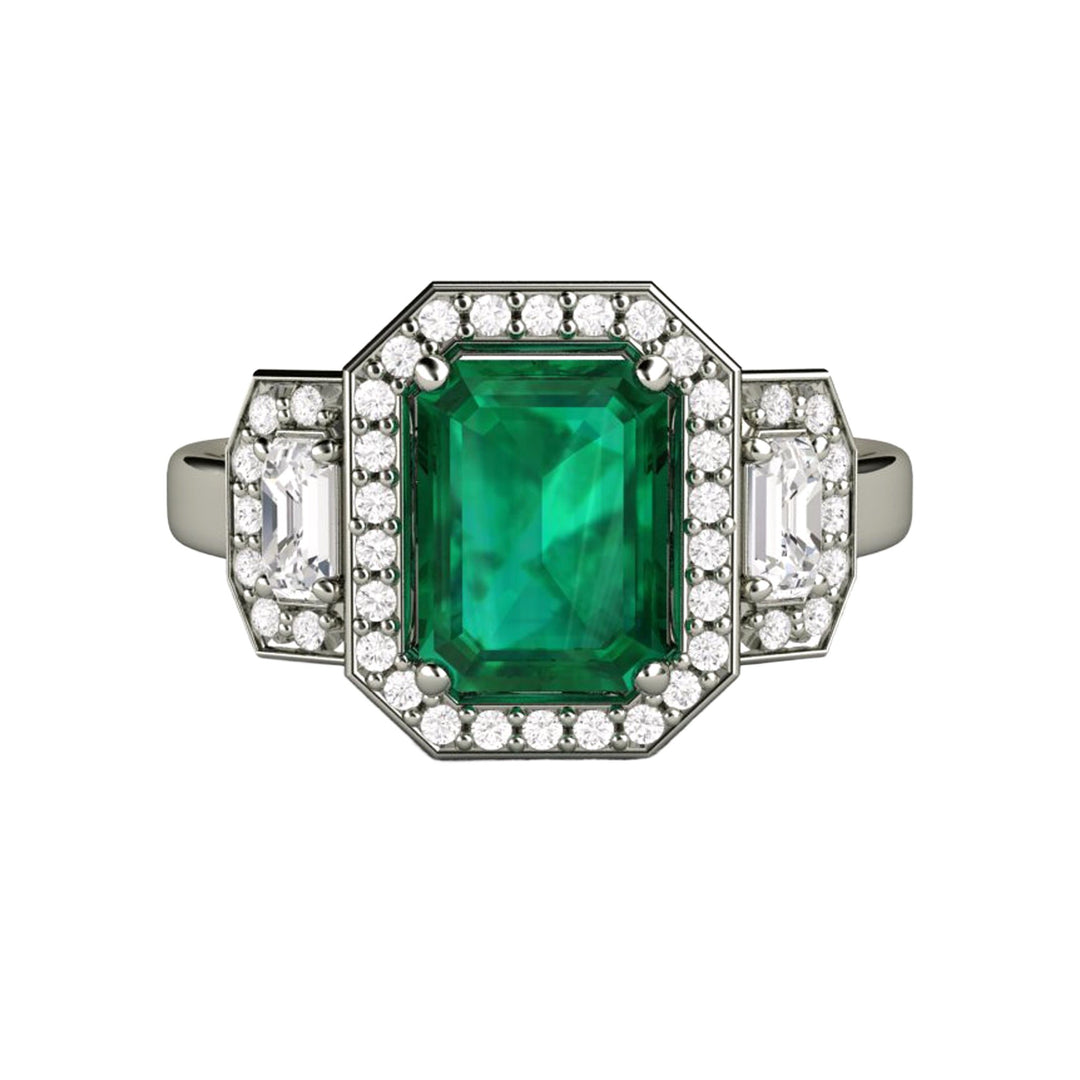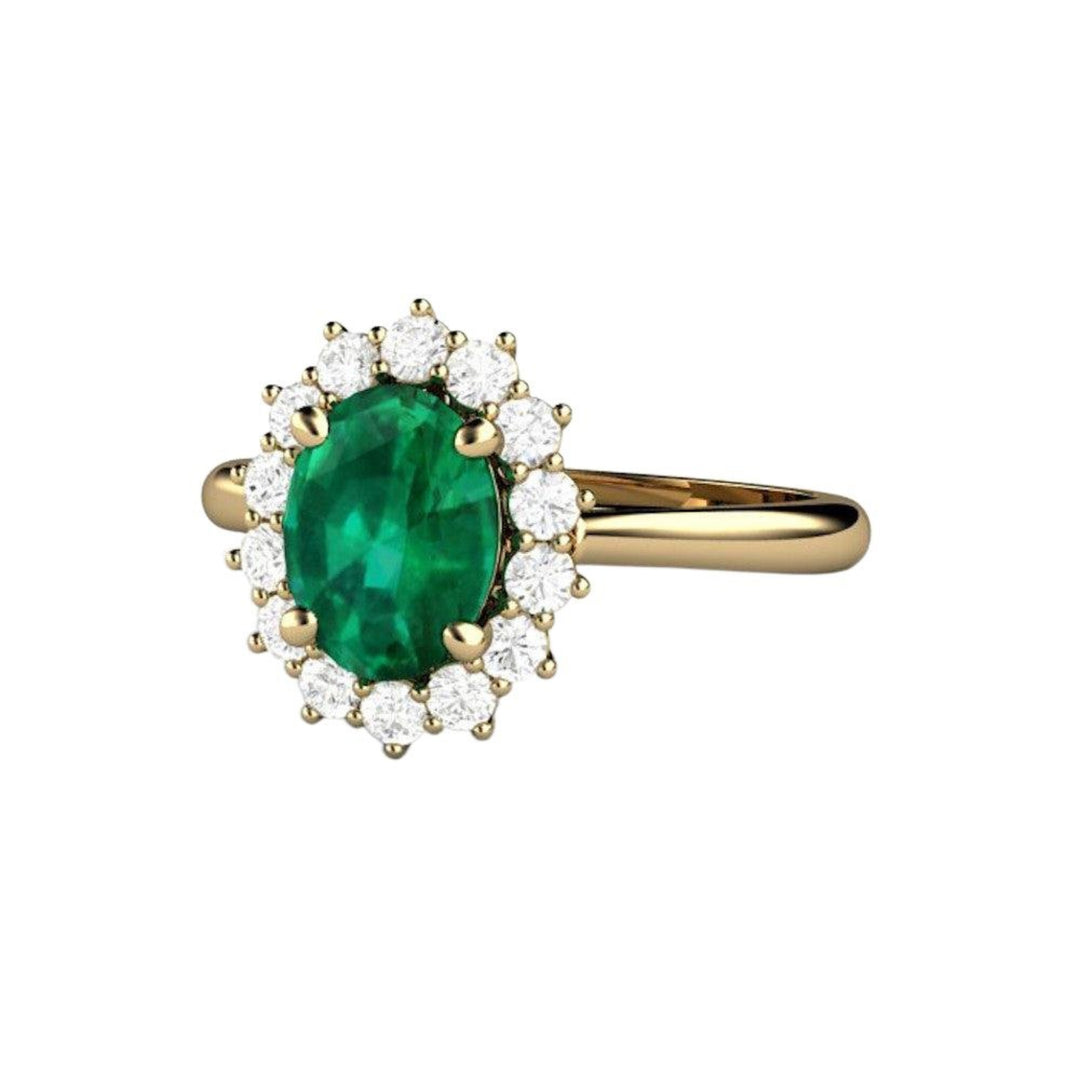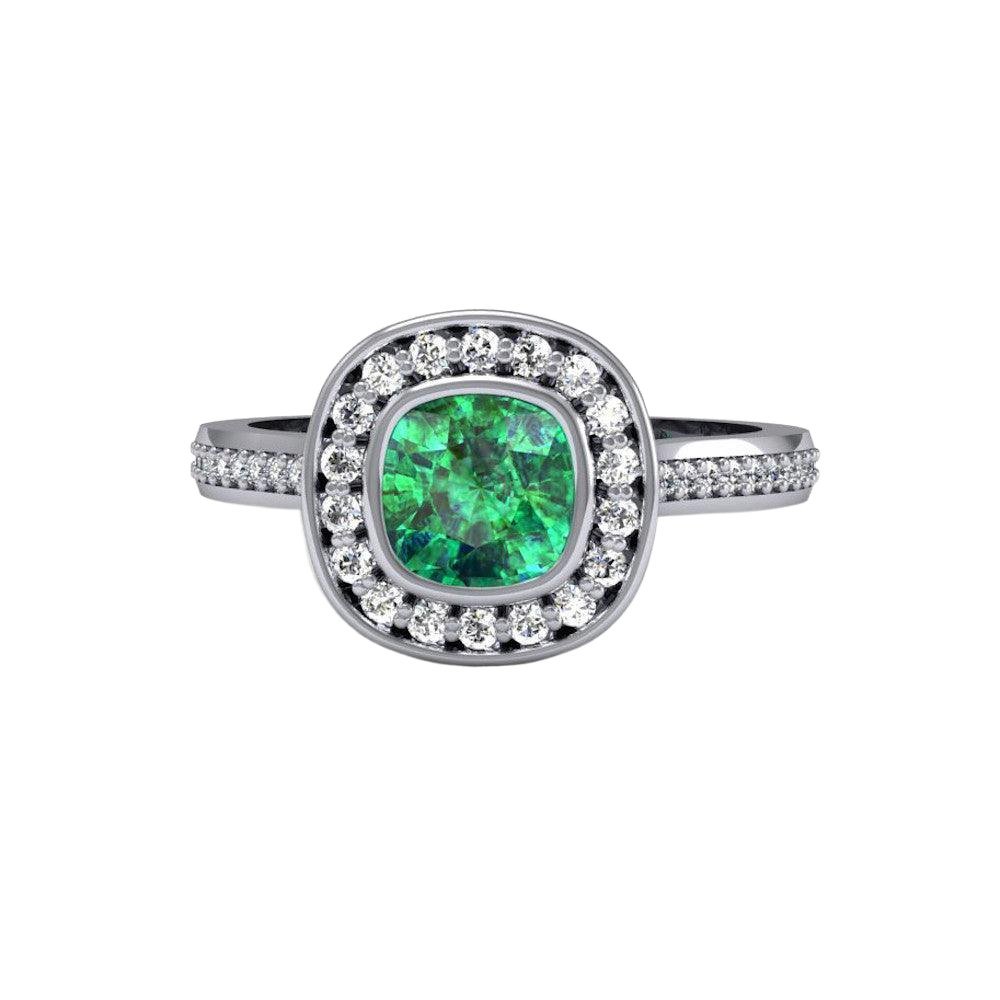Emerald Odyssey: Delve into the Rich History and Beauty
Emerald, known as the "Jewel of Kings," is a lush and verdant gemstone revered for its vibrant green color. This precious gem, a variety of the mineral beryl, exudes timeless elegance and is often associated with renewal and growth. Renowned for its intense hues and exceptional clarity, emerald has captivated hearts for centuries, making it a symbol of luxury and natural beauty in the world of jewelry.

Natural Emeralds
Color: The most desirable emerald color is a vibrant, pure green, often described as "emerald green." The presence of chromium and vanadium contributes to the stone's green hue.
Formation: Emeralds are a variety of the mineral beryl and are formed deep within the Earth's crust. The green color comes from the presence of chromium and sometimes vanadium.
Origin: Major sources of emeralds include Colombia, Zambia, Brazil, and Zimbabwe. Colombian emeralds are particularly prized for their intense color and quality.
Inclusions: Natural emeralds often contain characteristic inclusions known as "jardin," which are natural imperfections within the stone. These inclusions are considered part of the gem's character and can help identify genuine emeralds.
Hardness: Natural emeralds have a hardness of 7.5 to 8 on the Mohs scale, making them softer than some other gemstones. This can make them more prone to scratches and fractures.
Treatment: Many natural emeralds undergo treatments like oiling or resin filling to enhance their clarity and color. These treatments are widely accepted in the industry and are disclosed to buyers. However, at Rare Earth, we don't use resin filled emeralds. The only treatment we accept is oiling, which is standard.
Symbolism: Emeralds are associated with various symbolic meanings, including rebirth, fertility, and love. They've been historically linked to royalty and are considered a symbol of luxury.
Cut and Shape: Emeralds are cut into various shapes, with the most common being rectangular step cuts known as "emerald cuts." The cut is designed to minimize the impact of inclusions and maximize the stone's color.
Birthstone: Emerald is the birthstone for May.
Jewelry Use: Emeralds are popularly used in various types of jewelry, including rings, necklaces, earrings, and bracelets. They are often paired with diamonds or other gemstones to create exquisite and vibrant pieces.
Care: Due to their softer nature, emeralds require gentle care to avoid scratches and damage. It's advisable to remove emerald jewelry when engaging in activities that may subject the gem to impact.

Lab-Grown Emeralds:
Formation: Lab-grown emeralds are created through controlled environments using techniques such as hydrothermal and flux methods. These methods mimic the natural processes that form emeralds but in a more controlled and accelerated manner.
Color: Lab-grown emeralds can be produced in various shades of green, and their color is often consistent and can be controlled during the growth process.
Inclusions: Depending on the manufacturing process, lab-grown emeralds may have fewer or no visible inclusions, offering high clarity compared to some natural emeralds.
Hardness: Lab-grown emeralds have a Moh's hardness of 8, and are more durable than natural emeralds. They are suitable for daily wear.
Sustainability: Lab-grown emeralds are considered a sustainable and ethical choice, as they do not involve the environmental impact of traditional mining. They are often favored by those seeking eco-friendly alternatives.
Affordability: Lab-grown emeralds are generally more affordable than their natural counterparts, making them an accessible option for those who appreciate the beauty of emeralds but have budget considerations.
Identification: Gemologists use advanced techniques to distinguish between natural and lab-grown emeralds, including examining inclusions, growth patterns, and specific features that may indicate their origin.
Both natural and lab-grown emeralds offer stunning options for jewelry, and the choice often comes down to individual preferences, ethical considerations, and budget constraints. Whether natural or lab-grown, emeralds continue to enchant with their vibrant green color and timeless allure.
Any design can be made with emerald. Don't hesitate to inquire.
EMERALD JEWELRY COLLECTION
CUSTOM JEWELRY
Dreaming of a unique piece of jewelry? Let us bring your vision to life! Share your ideas and desires, and we'll work together to create a stunning custom design that's truly one-of-a-kind. Reach out to us today!



































